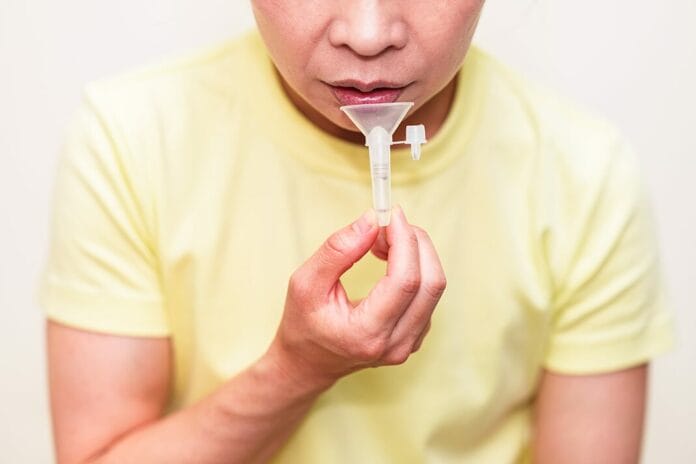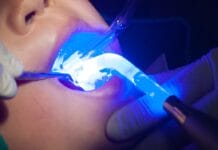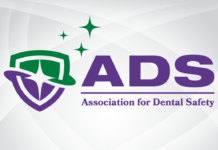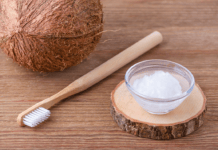Saliva seems unimpressive to many. Those who do not bother to look further than the lubrication it offers to the oral cavity may fail to realize the potential this resource can provide. As technology and knowledge progress, professionals are beginning to understand how essential this clear fluid can be to overall health.
Those outside of the dental profession, and perhaps some of those who are within, may find saliva or spit, as it is often called, simply gross. To spit, slobber, or even dribble this fluid is considered ill-mannered and perpetually gross. Nothing causes me to gag more than for someone to spit while speaking to me, only to have it land upon my face.
Those who glove up and routinely suck spit during dental procedures are also sometimes “grossed out” by the mere sound of that ropey fluid being drug through the saliva ejector. Thinking of this fluid as more than just a lubricant can be challenging to many. However, saliva is so much more than we give it credit for.
What is saliva?
Saliva is a complex biological fluid produced by the parotid (20%), submandibular (65% to 70%), sublingual (7% to 8%), and minor salivary glands located in the lips, tongue, palate, cheeks, and pharynx (< 10%), as well as by the gingival sulcus (crevicular fluid).1 This mixed production of saliva is called whole saliva.2 It is comprised of a pool of different organic and inorganic components that represent the physiology of the human body.1
In addition to the massive presence of water, saliva contains metabolites, enzymes, antibodies, hormones, antimicrobial molecules, and cytokines – all potential biomarkers for oral and systemic diseases.1 Biomarkers are defined as “quantifiable factors that can interact physiologically and biochemically at a molecular or cellular level, and can act as a surrogate indicator of normal, pathological, and interventional behaviors of the body’s response.”3
The human body produces an average of 1 to 1.5 liters of whole saliva daily.4 Saliva supplies lubrication to the oral cavity, which aids digestion. Food is chewed into a bolus that is easily swallowed with the help of saliva. It helps dry foods to be readily enjoyed as the molecules in food must be solubilized to taste. Saliva also assists in flushing the mouth of food debris.5
The excretion of saliva is responsible for buffering the pH of the mouth in an effort to maintain a neutral field of seven with the production system of bicarbonate, protein, and phosphate.4,6 Saliva is also responsible for a vital contribution to protecting the oral cavity tissues from infections and dental caries through the production of lysozyme.5,6
Saliva’s Role in Overall Health
Researchers have found that salivary analysis enables the prediction, diagnosis, and prevention of many health problems. Unlike blood analysis, saliva looks at the biologically active compounds and is truly representative of what is clinically relevant.5
Saliva’s role in diagnostic tests is not a newer concept. First described in China in 1000 BC and a common test in England from 800 to 1200 AD, many ancient societies used saliva as a polygraph to determine if someone was guilty by conducting what was coined as the “Rice Test.” A handful of dry rice was given to the accused and placed in the mouth. If anxiety and fear were heightened due to presumable guilt, thus reducing the saliva production, then the accused would not be able to successfully produce a bolus with the rice and was deemed guilty.4,7-9
Saliva was not used in medical diagnostics until the early 1900s when it was used to assess diathetic diseases such as gout and migraine.4 In the 1960s, saliva was used as a screening tool for cystic fibrosis due to abnormal secretions.10
Salivary diagnostics gained speed as researchers learned more, and by the 1990s, this opened up the potential for significant application to the development of diagnostics for systemic human diseases.4 Salivary diagnostics can be utilized to help uncover systemic diseases, viral diseases, drug monitoring, hormone monitoring, caries activity testing, and diagnosis of oral disease.11
Currently, research indicates that saliva is beneficial in helping to diagnose or monitor autoimmune disorders, genetic disease, cancer, cardiovascular disease, endocrine function, and Alzheimer’s, in addition to those aforementioned.12
Salivary diagnostics has been used as an early detection tool in diagnosing cancers such as prostate, breast, oral, and oropharyngeal by uncovering biomarkers by using lower limits of detection. Considering cancer is the second leading cause of death, early detection is key.3
Salivary Diagnostics Role in Periodontal Disease
Salivary diagnostics can be very beneficial in evaluating and diagnosing periodontal disease. While periodontal probing, clinical evaluation of attachment loss, and radiographical evidence are all important to the diagnosis of periodontal disease, human error can hinder its accuracy. Most importantly, it is crucial to understand that clinical signs of periodontal disease appear long after the disease process has begun, making salivary testing even more important for early disease detection.13
Saliva is a natural biological fluid used to measure microbial and protein biomarkers of this disease process.14 Enzymes present in the saliva have shown a reliable relationship with periodontal status and response to treatment.10 The biomarkers found in the saliva can help the clinician determine the susceptibility, the relationship it has with periodontal disease, and the severity of the disease.15
By determining what types of bacterial strains are inhabiting an individual’s oral cavity, dental professionals can also illustrate the connection of these bacteria to other systemic diseases they have an association with. Approximately 57 systemic diseases have been hypothesized to be associated with periodontal disease alone.16
Saliva Testing Tools and Methods
Saliva testing is a relatively easy and inexpensive concept that requires little training. Collecting saliva from patients is more cost-effective and safer than obtaining blood samples, making this testing method simple to obtain while in the dental chair.
There are various devices that can be used to collect saliva samples, and according to the salivary diagnostics company being utilized, the collection devices may vary. The most common method of collecting saliva is having the patient sit in a comfortable position while tilting the head forward to allow saliva pooling.3
The most technological device for point-of-care saliva testing is lab-on-a-chip.3 These devices can perform sample pre-treatment, manipulation, and biomarker detection, essentially creating a miniature laboratory in a few square centimeters.3 Offices interested in offering these services will need to connect with a salivary diagnostic company and complete the required training prior to offering these services.
Once saliva samples are analyzed, dental professionals are provided a preview of what each patient is at risk of developing or may already have. This unique window of opportunity affords dental professionals the necessary tools to educate patients on the mouth-body connection and how proper oral hygiene can assist in whole-body health.
When using this method to drive home the importance of oral health, it also allows the dental professional to place emphasis on the importance of recommended treatment and investing in oral care products, such as electric toothbrushes, to aid in optimal oral health. Salivary diagnostics will only enhance patient care by going beyond the dental chair to assist in patient compliance and whole-body health.
In Closing
While the FDA has yet to approve salivary testing for evaluating caries, periodontal disease, or oral and oropharyngeal cancer, it has been approved for authorization of emergency use in the detection of SARS-CoV-2. However, with more research into salivary biomarker detection, salivary diagnostics hold promise in detecting and diagnosing multiple diseases of the mouth and body.17 The National Institute of Dental and Craniofacial Research invested over three million dollars in salivary diagnostics research in efforts to support the clinical research of salivary biomarkers.18
As more dental professionals utilize this service, education on how important salivary diagnostics can be will slowly permeate the dental field. With proper education, this seemingly anti-dramatic fluid can improve its reputation with society as a whole.
Before you leave, check out the Today’s RDH self-study CE courses. All courses are peer-reviewed and non-sponsored to focus solely on high-quality education. Click here now.
Listen to the Today’s RDH Dental Hygiene Podcast Below:
References
- Antonelli, R., Massei, V., Ferrari, E., et al. Salivary Diagnosis of Dental Caries: A Systematic Review. Current Issues in Molecular Biology. 2024; 46(5): 4234-4250. https://doi.org/10.3390/cimb46050258
- Iorgulescu, G. Saliva Between Normal and Pathological. Important Factors in Determining Systemic and Oral Health. Journal of Medicine and Life. 2009; 2(3): 303-307. https://www.ncbi.nlm.nih.gov/pmc/articles/PMC5052503/
- Pittman, T.W., Decsi, D.B., Punyadeera, C., Henry, C.S. Saliva-Based Microfluidic Point-of-Care Diagnostic. Theranostics. 2023; 13(3): 1091-1108. https://www.ncbi.nlm.nih.gov/pmc/articles/PMC9925318/
- Life in the Lab Staff. (2022, January 19). What Is Saliva and Why Is It Important for Diagnostics? ThermoFisher Scientific. https://www.thermofisher.com/blog/life-in-the-lab/what-is-saliva-and-why-is-it-important-for-diagnostics/
- Tiwari, M. Science Behind Human Saliva. Journal of Natural Science, Biology and Medicine. 2011; 2(1): 53-58. https://www.ncbi.nlm.nih.gov/pmc/articles/PMC3312700/
- Bechir, F., Pacurar, M., Tohati, A., Bataga, S.M. Comparative Study of Salivary pH, Buffer Capacity, and Flow in Patients With and Without Gastroesophageal Reflux Disease. International Journal of Environmental Research and Public Health. 2021; 19(1): 201. https://www.ncbi.nlm.nih.gov/pmc/articles/PMC8750732/
- Vicianova, M., Historical Techniques of Lie Detection. Europe’s Journal of Psychology. 2015; 11(3): 533-534. https://www.ncbi.nlm.nih.gov/pmc/articles/PMC4873061/
- Mandel, I.D. Salivary Diagnostics: More Than a Lick and a Promise. Journal of the American Dental Association. 1993; 124(4): 85-87. https://jada.ada.org/article/S0002-8177(93)41019-8/pdf
- Brandle, S. G. (2021). Interrogations and Confessions. In Criminal Investigation (5th ed., pp. 188-223). SAGE Publications. https://www.sagepub.com/sites/default/files/upm-binaries/59586_Chapter_7.pdf
- Giannobile, W.V., Beikler, T., Kinney, J.S., et al. Saliva as a Diagnostic Tool for Periodontal Disease: Current State and Future Directions. Periodontology 2000. 2009; 50: 52-64. https://www.ncbi.nlm.nih.gov/pmc/articles/PMC5695225/
- Ar, P., Gulati, A., Mehta, D., Sugandhan, S. Diagnostic Applications of Saliva in Dentistry. International Journal of Clinical Pediatric Dentistry. 2009; 2(3): 7-13. https://www.ncbi.nlm.nih.gov/pmc/articles/PMC4086572/
- Greabu, M., Battino, M., Mohora, M., et al. Saliva – A Diagnostic Window to the Body, Both in Health and in Disease. Journal of Medicine and Life. 2009; 2(2): 124-132. https://www.ncbi.nlm.nih.gov/pmc/articles/PMC3018981/
- Enabling Outcomes Through Evidence Through Saliva Testing. (n.d.). Direct Diagnostics. https://www.directdiagnostics.com/
- Giannobile, W.V. Salivary Diagnostics for Periodontal Diseases. Journal of the American Dental Association. 2012; 143(Suppl 10): 6S-11S. https://jada.ada.org/article/S0002-8177(14)63753-3/fulltext
- Giannobile, W.V., Beikler, T., Kinney, J.S., et al. Saliva as a Diagnostic Tool for Periodontal Disease: Current State and Future Directions. Periodontology 2000. 2009; 50: 52-64. https://www.ncbi.nlm.nih.gov/pmc/articles/PMC5695225/
- Grant, W.B., van Amerongen, B.M., Boucher, B.J. Periodontal Disease and Other Adverse Health Outcomes Share Risk Factors, Including Dietary Factors and Vitamin D Status. Nutrients. 2023; 15(12): 2787. https://www.ncbi.nlm.nih.gov/pmc/articles/PMC10300878/
- Salivary Diagnostics. (2023, October 3). American Dental Association. https://www.ada.org/en/resources/ada-library/oral-health-topics/salivary-diagnostics
- Salivary Diagnostics. (2018, August). NIH: National Institute of Dental and Craniofacial Research. https://www.nidcr.nih.gov/grants-funding/funded-research/research-investments-advances/salivary-diagnostics











